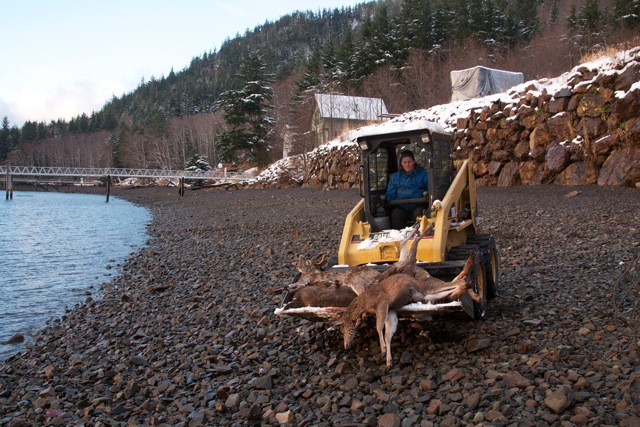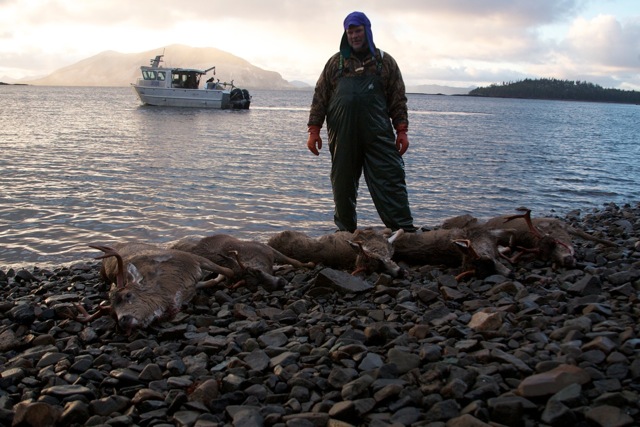Went to check traps today. Matt and I made 6 sets on Friday, 2 box/conibears per set so 12 traps out. I also tried strawberry jam as a second bait/attractor after reading others who had success. Makes sense, as marten eat berries.
The day started out in usual fashion. On the way to the ramp, my boat trailer practically disintegrated. One side of the back cross piece that has the two sets of rollers came clean off. I heard a scraping sound, and thought it odd as I couldn’t find the plow truck making it. Then I realized it might be me, so I got out, and surveyed the damage. At that point, with the weather fair and supposed to blow, I just got back in and scraped it right through Douglas to the ramp, launched the boat, and said I’d deal with it later.
At the first set, I knew it was gonna be a good day, regardless of the trailer. A double – and I saw 3 deer in on the beach, but of course, hunting season closed on Sat., so they are scot free now. The next 2 sets had nothing, but set number 4 had another double. Set 6 had a single with the other trap snapped. 5 for the day – equal to last year and year before’s total, so I’m getting the hang of it.
Flat calm, just about, except for the wind shipping out of Sheep Creek. It’s an interesting piece of water, as there may be only a 1 foot chop, but the wind can seem like it will roll you over if you let it.
Came back in a snow squall. Used the GPS to get across to Douglas Island shore, then around the corner and back to town.
I called around to find out about a new trailer, since this one seems to have about had it. Bolt holes are rusting through. When I got a quote that a new one was $2200, I thought twice, and headed to Western Auto and bought the new parts I needed. I used some cross bracing with pressure treated lumber scraps, and a couple hours later, went back to the ramp and got the boat.
I put the 5 marten in the freezer box with the other 4 and 2 mink, and was dog tired when I walked in the door. It’s Sara’s birthday today, to I better get something on for her for dinner. Halibut sounds good.
–
Mark Stopha
Alaska Wild Salmon Company
4455 N. Douglas Hwy
Juneau, AK 99801
www.GoodSalmon.com


